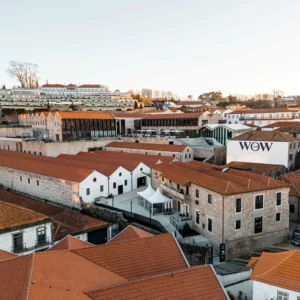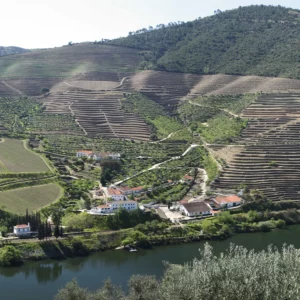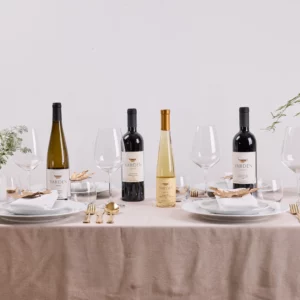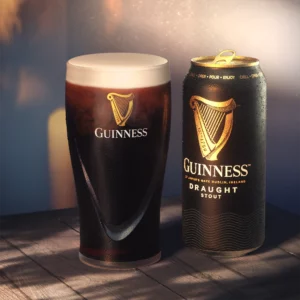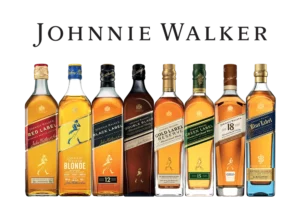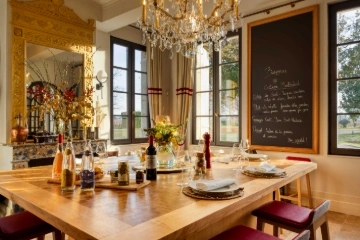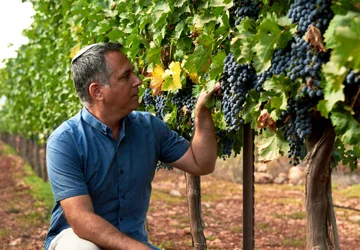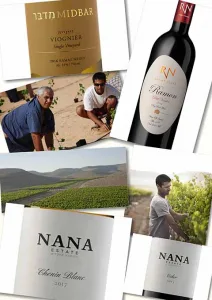At Rosh Hashanah, the Jewish New Year, we eat sweet foods along with apple and honey, and hope for a ‘sweet year’. So I usually recommend sweet wines to go with the festive meal. As the focus is on sweet, I can’t help but pay attention to the startling rejuvenation of a famous brand in Israel. I also consider afresh the large market for sweet wines, which appears to be hidden from view from many so called experts in the wine business.
In the late 1970’s and early 80’s, Blue Nun, a German Liebfraumilch, was at its peak and one of the biggest selling wine brands in the world. This was the time I came into the wine trade. There was also Mateus Rosé, with the bulbous shaped bottle and Mouton Cadet, the wine with noble roots. Both those were imported to the UK by Hedges and Butler, a 300 year old wine and spirits shipper owned by Bass Charrington Vintners. (I used to work for Bass Charrington).
However Blue Nun beat them both in volume sales and in history. It was first launched as a better quality Liebfraumilch in the 1921 vintage. (Mouton Cadet was first produced in 1930 and Mateus in the 1940’s.) The creators of Blue Nun were a German Jewish wine company called Sichel Sohne, based in Mainz, that had been founded by Herman Sichel in 1857.
The Nuns on the label originally wore brown habits, but a printing error turned them blue and a new brand was born. Amusingly for the first shipment to America, the mixture of religion and alcohol was too potent for the authorities and approvals were not given until girls replaced the nuns on the label!
The person that made it into the world’s greatest brand was Peter Max Sichel. (I add the Max to avoid confusion, because another family member, Peter Allan, was a much respected figure in the Bordeaux wine trade). Peter Max Sichel hailed from the German company and settled in Manhattan. I met him when I was export manager of the Golan Heights Winery and we wanted to get tips on how to advance the Yarden brand. He was dashing, debonair and kind, as befits his extraordinary life as a vintner, prisoner, soldier and spy (His biography “The Secrets of My Life.” is a great read), but we did not get any secrets out of him. However it was a pleasure and honor to meet him.
He organized a series of advertisements including the famous one saying Blue Nun was suitable ‘Right through the meal.’ Blue Nun succeeded at a time when semi dry, medium or even semi sweet wines became all the rage. Blue Nun was more recognizable than Liebfraumilch, and the clearer label was easier to understand than the typical German label with gothic writing and long unpronounceable names. The brand soared.
However by the 1990’s a decline set in and in 1996 Blue Nun was sold to the seven generation family firm F.W. Langguth Erben. At one stage there were Sichel subsidiaries in the UK, USA and France but the only survivor of the family business is the French company, Maison Sichel, originally founded by the English branch of the family. They probably rather frowned at the success of Blue Nun being focused on fine wines of Bordeaux, gaining great respect from their peers. Funnily enough they maintain an interest in Israel as they market Clos de Gat, one of Israel’s finest small wineries, in export around the world and were involved from the beginning, even to the point of being in at the creation of the innovative name.
Langguth revived the famous brand by upgrading the quality, expanding the range, improving the presentation and choosing an iconic blue bottle. Incidentally the largest selling kosher wine in America (not including iconic Kiddush wines like Manischewitz) is the Bartenura Moscato, which also comes in a blue bottle.
Today Blue Nun remains a success exporting to 100 countries, even if not reaching the heights of its peak. However, Blue Nun in Israel is a phenomenon. It is today the number one imported brand to Israel and the best selling imported white wine ever. It clearly answers the call for easy to understand wines that deliver what the consumer is looking for. The success has been astonishing.
The reason has been because it answers a need and the impressive work by the dynamic Shaked family, one of the main wine importers in Israel, who also own the Derech Hayayin (Wine Route) chain of wine stores.
The legendary wine critic Daniel Rogov, one of my predecessors as wine writer for the Jerusalem Post, might have written about Blue Nun with his usual wit: “The kind of people who like this sort of wine, will like it very much.” Damning with faint praise. It is a phrase I like very much and frequently use, always giving credit to Rogov of course.
However we should be less superior and condescending. A wonderful book has been written by the Master of Wine Tim Hanni called “Why You Like The Wines You Like.’ This has been followed up by “The Sweet Wine Lovers’ Manifesto”. Copies of these should be sent to the marketing department of every winery.
The books explain that the wine world is run by ‘dry wine fashionistas’ who ignore those members of the population who are unable to enjoy dry white wines or red wines because they find them acidic and astringent. They are what he categorizes as the ‘sweet wine vinotype’. Their palate is too sensitive for regular wines. Yet the wine world tends to ignore this underclass and the wine intelligentsia will look down their nose at anyone who prefers sweet.
However when you realize maybe 40% of the population in the west are sweet vinotypes (and even more in the Far East), you realize the wine industry is missing a trick here. The craze for White Zinfandel in the USA and Moscato in Israel gives an inkling we should not ignore. The Yellow Tail success was partly because of a touch of sweetness. As Tim Hanni writes: “Mankind has been making wine for 8,000 years, and until the last 50 years, most of the wines were sweet wines.” Obviously we all know some of the most expensive and rarest wines in the world are sweet (Sauternes, Eiswein, Trockenbeerenauslese, Tokay etc). Yet amongst the Jewish wine intelligentsia, sweet wine is particularly reviled because of memories of Kiddush wines like Manischewitz, Palwin and Konditon. Funny, because if I was to generalize, both Israelis and Jews worldwide have a sweet tooth!
So when I went into a wine shop to prepare for this article, I was not surprised when the manager said “Yes Blue Nun is popular, but I refer to sell real wine”, but the joke is on him and the people who only drink ‘real wine’. We should learn from Blue Nun and open our eyes. There is a whole world out there. Some will graduate from semi sweet wines to dry and be welcomed to the dry wine club. However, sweet wine vinotypes are unable to enjoy dry wines because of a genetically sensitive palate, not because they are inferior beings.
We used to talk about matching wine with food. Then we became slightly more relaxed, and recommended ‘matching wine to mood, not to food’. Tim Hanni recommends “matching wine to the diner, not the dinner.”
It is a nice turn of events that this wine brand founded so many years ago by a traditional Jewish family in Germany should find itself again in Israel. I think Blue Nun teaches us all a lesson and empowers the sweet vinotype. Let’s not denigrate them. Wine experts get down from Mount Olympus. Sweet is not a dirty word. Drink what you like and enjoy it.
Some of the wines under expanded the Blue Nun label are as follows:
BLUE NUN AUTHENTIC
These are wines to drink not taste. It almost misses the point to write a tasting note.This is the classic Blue Nun made from the Rivaner grape, aka Muller Thurgau grown in the Rheinhessen region. Comparatively low alcohol, aromatic, fresh, fruity and semi sweet. Served very cold, it is refreshing. Price: NIS 40
BLUE NUN GEWURZTRAMINERThe big hit in Israel, where Gewurz has replaced Emerald Riesling as the white wine of choice. I remember when Yarden launched the first Gewurztraminer, no one would buy it because they could pronounce the word. How things change. The wine has the unmistakable Gewurz aroma of lychee, rose water, a spicy flavor and a semi sweet finish. The wine combines three increasingly popular trends here: the Blue Nun brand, anything called Gewurztraminer and wines with perceptible sweetness. Price: NIS 45
BLUE NUN GEWURZTRAMINER RIESLING KOSHER
This is new on the market and carries the Blue Nun story to the kosher market. It may be found in wine shops and restaurants. It has the traditional Blue Nun label. It is more aromatic than the Authentic, fruity and semi sweet. A wine called BLUE WINE is the cuvée of kosher Blue Nun found in supermarkets. Price: NIS 50
BLUE NUN RIESLINGThe other table wines have synthetic corks, this has a screw cap. So sensible and easy. The wine has a more elegant, lively nose than the other wines. It is made from Riesling, the classic German variety, from the Rheinhessen region. It is slightly less sweet than the others but does not come in the blue flute bottle associated with Blue Nun these days. Best buy in the Blue Nun family. Price: NIS 40
BLUE NUN SPARKLING 22K GOLDDon’t be confused by the word dry on the back label (part of the confusing sparkling wine terminology.) This is a semi sweet sparkling wine with flakes of gold floating in the wine. Light, fruity and visually attractive. Serve it ice cold. There are also mini 200 ml bottles of this making it a great beach or picnic wine. Price: NIS 50 (750 ml.)
Adam Montefiore has been advancing Israeli wines for over 30 years and is known as the ‘the ambassador of Israeli wines’. He writes a regular column called ‘Wine Talk’ for the Jerusalem Post. www.adammontefiore.com





